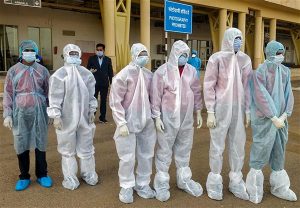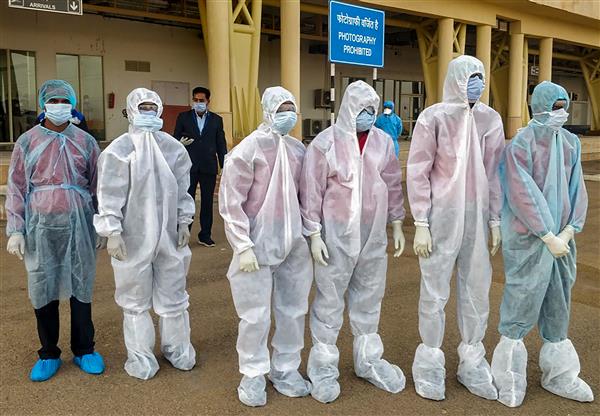 Janjivan Bureau / Mumbai : Extensive testing to identify asymptomatic individuals and quarantining those diageaunosed with severe acute respiratory syndrome coronavirus 2 (SARS-CoV-2) with continued social distancing – not a lockdown alone – is the sole effective strategy to contain the pandemic in India, recommends the first India-specific epidemiological model for Covid-19’s spread in the country.
Janjivan Bureau / Mumbai : Extensive testing to identify asymptomatic individuals and quarantining those diageaunosed with severe acute respiratory syndrome coronavirus 2 (SARS-CoV-2) with continued social distancing – not a lockdown alone – is the sole effective strategy to contain the pandemic in India, recommends the first India-specific epidemiological model for Covid-19’s spread in the country.
“Lockdowns are not very effective, especially India-wide lockdowns, because the disease will inevitably flare up again after the lockdown ends,” said Gautam Menon, professor of biology and physics, Ashoka University, Delhi. “We stress that a comprehensive testing and quarantining regime is the only real long-term solution, until a vaccine is found.”
Termed as INDISCI-SIM, the first detailed state-level epidemiological model for India has been developed by scientists from Savitribai Phule Pune University (SPPU), Chennai-based Institute of Mathematical Sciences, Indian Institute of Science at Bengaluru and Ashoka University under the banner of the Indian Scientists’ Response to Covid-19 – a voluntary group of more than 400 scientists.
On Tuesday, principal scientific advisor to the government of India K VijayRaghavan in his reaction to INDISCI-SIM tweeted, “Thanks all involved. These are useful analyses and are being looked at carefully along with other inputs.”
The model involves nine different detailed compartments – susceptible, exposed, pre-symptomatic, asymptomatic, mild symptomatic, severely symptomatic, hospitalised, recovered and dead – and compares each stage with non-pharmaceutical interventions such as lockdown, quarantining and expanded testing to drawn an inference on propagation of the disease.
“This is possibly the most vigorous model with several built complexities that can be further broken down to state, city or district levels,” said Bhalchandra Pujari, Centre for modeling and Simulation, SPPU. “In case of the virus and depending on a person, the patient may take one of these nine paths. Our model demonstrates how one phase of a typical population will travel from one compartment to another.”
For instance, the window of recovery is highest for tested asymptomatic individuals followed by mildly symptomatic, while it’s the least for severely symptomatic and critical.
“Model simulations do not quantify the economic costs of the lockdown,” said Pujari. “Extension or not of the lockdown after May 3, India must increase testing capacities faster than the propagation of the disease. Opening up transport pan-India is not a good idea as per our model.”
Menon said INDISCI-SIM is the most detailed and versatile among current models for the disease’s trajectory in India.
“We plan to release an on-line tool in which anyone can test different scenarios for themselves, including policy makers and other researchers. The program will also be made publicly available,” added Menon.
Subsequent versions of the model will incorporate district level description, in addition to differing health care capacities across different regions and their implications for disease spread.

















